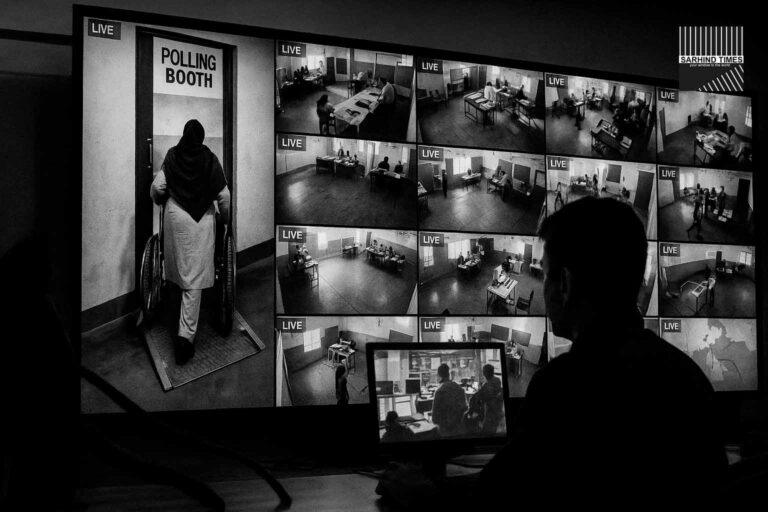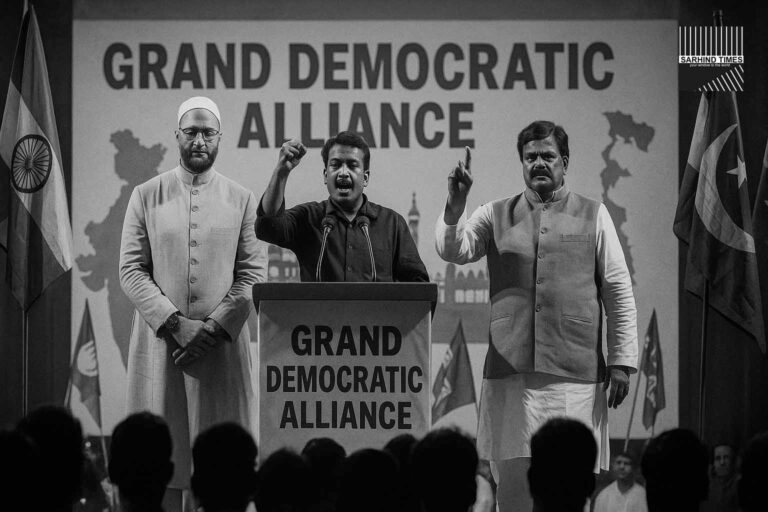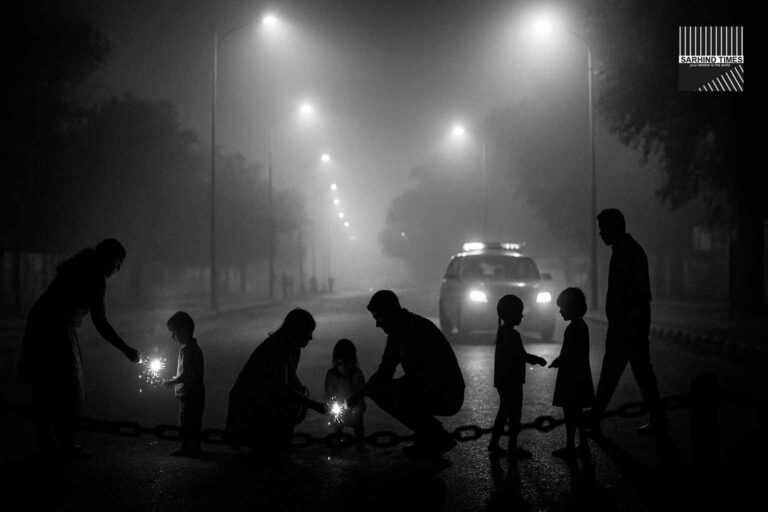Most-watched women’s international cricket match ever caps years of momentum for the women’s game
Colombo / Mumbai / New Delhi, October 17, 2025 — The India–Pakistan rivalry just delivered a watershed for women’s sport. Broadcasters and the ICC confirmed that India’s win over Pakistan in the Women’s ODI World Cup group stage is the most-watched women’s international cricket match of all time, on both TV reach and digital minutes consumed. Early tallies indicate 28.4 million unique reach for the marquee clash and 1.87 billion minutes of viewing—records that vault the fixture beyond every previous women’s international, and place the current tournament on a breakneck trajectory for audience growth.
The milestone doesn’t stand alone. Across the first tranche of World Cup games, the ICC says 60 million fans have already tuned in—five times the comparable stage of the previous edition—with watch-time zooming to 7+ billion minutes. Those aggregate curves, coupled with a single-match peak like IND-PAK, are precisely what administrators and sponsors needed to justify larger central contracts, deeper domestic calendars, and modern marketing around women’s cricket.
Below, SarhindTimes unpacks what made this audience spike possible, what it changes for athletes and administrators, and how Indian cricket should convert one extraordinary night into sustained, season-long attention.
The spike explained: scheduling, storytelling, and the rivalry factor
Prime-time placement + marquee rivalry. India–Pakistan is cricket’s blue-ribbon event. Placing the women’s ODI chapter in a weekend, prime-time window in Colombo channeled maximal appointment viewing. The match narrative—a confident India side vs a resurgent Pakistan chasing World Cup momentum—did the rest.
The compound effect of the WPL. Since 2023, India’s Women’s Premier League (WPL) has grown a year-round audience habit, training viewers to know the athletes by name and specialty (Mandhana’s tempo setting, Harmanpreet’s finishing, Richa Ghosh’s ice-cold death overs). That “fandom infrastructure” is now paying off on the international stage: casual festival audiences became repeat viewers; repeat viewers turned evangelists. (WPL 2025 finals and eliminators also sustained national-scale interest.)
Digital is not an afterthought anymore. The 1.87 billion minutes figure underscores just how much consumption has shifted to OTT—snackable highlights, shoulder content, and multilingual feeds compound live peaks. The India–Pakistan game didn’t just “rate well”; it created a tentpole that fed every platform format in parallel—linear TV, in-app live, reels, shorts, and post-match explainers.
Tournament tailwinds. Elsewhere in the World Cup, high-octane cricket has kept interest sticky—Australia’s record chase in Vizag, Mandhana’s landmark ODI milestone, and England’s surge add fresh narrative fuel between India fixtures. Put together, the championship is producing new “entry points” for casuals almost every matchday.
What changes now—for the BCCI, ICC, broadcasters, and brands
1) Central contracts and pay architecture
When a single group game becomes the most-watched women’s international ever, it strengthens the economic case for tiered central contracts, win/appearance bonus pools, and longer retainer lengths. The logic is simple: if the revenue pie is growing, a transparent share must flow to the athletes. Expect calls for multi-year frameworks that align with World Cup cycles and WPL windows.
2) Domestic calendar depth
Viewership scale is not just a World Cup phenomenon. With WPL maturing, domestic List-A and T20 calendars can be expanded—inter-zonal windows, televised Challenger Trophy-style events, and A-team tours. The objective: ensure an Indian women’s fixture appears on a national broadcaster/OTT almost every week in-season, so fans never fall out of the habit.
3) Data-led scheduling and windows
No more “floating” windows. The record validates fixed annual windows for women’s internationals, protected from major men’s bilateral clutters. Administrators can anchor IND-AUS/ENG-IND women’s series in high-yield weekend slots, spaced to keep WPL oxygen intact.
4) Content that travels
Post-game OTT consumption suggests a playbook: tactical explainer clips (field settings, matchup heat maps), behind-the-scenes mini-docs (training days, kit rooms), and language-localized edits for non-metro cohorts. The IND-PAK spike shows that the next 10–15 million fans will be won via vernacular storytelling, not just scorecards.
5) Brand categories and CPM resets
A repeatable IND-PAK-scale audience lets broadcasters re-rate CPMs (cost per thousand impressions) for women’s cricket inventory. Watch ed-tech, fintech, beauty & personal care, auto two-wheelers, and D2C brands deepen category presence, with women-first creative rather than “cut-downs” of men’s ads. MediaBrief’s network-level recorders hint at the confidence inside sales rooms.
The players’ perspective: atmosphere, pressure, and pipeline
Bigger atmospheres, bigger scrutiny. Full stands and loud TV audiences change match psychology. India’s players will enjoy thicker home-and-away atmospheres—and higher pressure at selection tables. The upside: higher bat-and-ball standards. The trade-off: more film review, more accountability after off-days.
Pathways are real now. With U-19 pathways and the WPL acting as a finishing school, India’s bench is qualitatively deeper than even three years ago. The pipeline matters because fans who discover Richa Ghosh in an IND-PAK chase will keep watching Railways vs. Karnataka if the broadcast product is smart and the talent is relatable. (That’s the WPL effect again.)
The ‘style of play’ conversation. Australia’s record chase and Mandhana’s milestones feed a tactical debate: should India lean further into powerplay aggression or middle-overs control? These are good problems; they are the hallmark of maturing teams competing in environments with real stakes.
Converting a peak into a plateau: ten concrete moves
- Lock a guaranteed IND-PAK bilateral every 18–24 months across formats (subject to boards/ICC), packaged with neutral-site showcases to tap diaspora markets.
- Standardize prime-time starts for India home games, with heat-map analysis of OTT drop-offs to tweak innings breaks and pre-game shows.
- Own the classroom: BCCI + state units to seed school-level tournament broadcasts on free digital, tied to player meet-and-greets—build fans before they become exam-season cord-cutters.
- Document the stars: quarterly all-access features on key players; push to airlines/rail content networks for long-tail discovery.
- Women-only ticket promos in Tier-2/3 cities for bilaterals; couple with local women’s cricket festivals and clinics.
- Data-forward broadcasts: hawk-eye overlays, win-probability graphics, slow-mo technique breakdowns—give first-time fans a vocabulary.
- Creator partnerships: recruit regional creators to do 60-second rules explainers and post-over recaps in Hindi, Tamil, Bangla, Marathi.
- Fantasy + prediction lite (responsibly): non-monetary prediction games keep casuals invested through quieter spells.
- Two-screen design: synch companion apps with in-stadium activations (QR polls, chants on the big screen) to collapse the gap between OTT and stands.
- Contract clarity: publish a pay-progression ladder—transparent retainers, match fees, bonuses—so the public can see investment matching the audience boom.
The business side: what sponsors and broadcasters will ask for
Proof of repeatability. One record game is extraordinary; three over the World Cup would be transformational. Expect broadcasters to set series-level KPI stacks: average minute audience (AMA), peak concurrent streams, unique reach, and clip-view funnels per language.
Smarter ad pods. Women’s cricket lends itself to shorter, smarter ad pods and in-game branded storytelling (player mic-ups, tactical boards). With evidence of higher completion rates on OTT, sponsors will push for contextual integrations over blunt mid-rolls.
Women-first creative. Brands that change voice, casting, and product framing for women’s sport will win the incremental lift—think women riders in auto, women-led financial independence in fintech, girls-in-STEM in ed-tech. The ROI case is better when the creative matches the audience.
Why this matters beyond cricket
Cultural permission. A women’s sports record night in South Asia rewires assumptions across federations—kabaddi, badminton, athletics, and hockey will cite this as precedent for prime-time women’s fixtures.
Policy signals. State governments and CSR boards can justify grassroots girls’ sport budgets with the “IND-PAK proof point”: if demand scales at the top, supply must widen at the base.
Media literacy. More young viewers—especially girls—learning team tactics, rules, and narratives via quality broadcasts expands sports literacy, which compounds into future fandom and participation.
The cricketing picture: form lines and the road ahead
India’s balance. The blend of top-order stroke-play and lower-order composure (Richa Ghosh’s finishing cameo is becoming a calling card) will be pivotal against high-press opposition.
Australia the benchmark. Their record chase underscores the standard India must match to lift silverware in knockout weeks: relentless batting depth and flexible bowling plans.
England’s resurgence. With Sciver-Brunt in world-beater mode and Ecclestone’s control through the middle, England look like a top-three threat, raising the competitive ceiling across the tournament.
Tournament health. The ICC’s early-tournament data—60 million reach already—suggests audiences are staying after IND-PAK, not just parachuting in. That’s a crucial KPI for sustained value.
Risks and how to mitigate them
- Peaks without plateaus: Solve with consistent windows, not sporadic festivals; preserve WPL primacy as the on-ramp.
- Non-metro engagement gaps: Invest in regional commentary and vernacular creators; run state-association roadshows.
- Over-compression of schedules: Protect recovery standards; women’s cricket must not inherit the men’s calendar churn.
- Inequitable pay adoption: Publish pay-progression roadmaps; lock in with MOU-style stability through 2029.
- Over-indexing on IND-PAK: Build India vs. Australia/England mini-rivalries with named trophies, historic packaging, and traveling fan clubs.
Bottom line
The IND-PAK women’s ODI didn’t just set a record; it reset expectations. It tells administrators that prime-time women’s cricket is not a novelty but a growth engine. It tells broadcasters to invest in data-smart, language-rich storytelling. It tells sponsors that category-leading GRPs are available—right now—on the women’s side. And it tells a generation of girls that packed stands and surging streams are for them, too.
If Indian cricket uses this inflection to lock windows, deepen calendars, and reward athletes transparently, the next record we write about won’t surprise anyone—it’ll feel like the natural order of things. For now, enjoy the view from the summit; the work of building a plateau begins tomorrow.
#WomensCricket #INDvPAK #ViewershipRecord #WCC #SportsBiz #WPL #Cricket #OTT #SportsMarketing #WomenInSports























+ There are no comments
Add yours